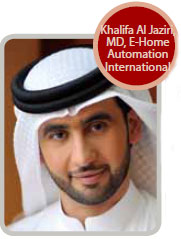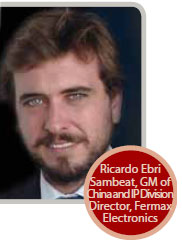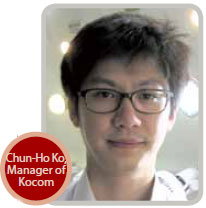 FAIL-SAFE
FAIL-SAFE
With so much riding on a single system, the data transmission must be stable and secured. The whole HA system is normally connected to a hub or central station. It should have backup features so that all subsystem functions are unaffected if the control panel stops working, said Khalifa Al Jaziri, MD, E-Home Automation International.
The control panel should be equipped with tamper protection, Pyle said. Some panels offer multiple communication paths, such as GSM radio and landlines for redundancy.
A backup server can be installed locally or remotely as a fail-safe mechanism, Baratta said.
SYSTEM CRITERIA
 When selecting HA systems, customers are making an investment in their homes. Ease of use, scalability and warranty are the top considerations for buyers.
When selecting HA systems, customers are making an investment in their homes. Ease of use, scalability and warranty are the top considerations for buyers.
Ease of use is the most direct and fundamental concern. After all, HA systems function as helpers rather than homeowners serving their households. “There is no point installing a system if end users cannot operate it,” said Al Jaziri.
Baratta added that it was better for end users to handle products before they purchase them.
For scalability and warranties, customers must consider how easy it is to add on or upgrade additional devices, Pyle said. It is also important whether upgrades can be added by end users themselves or by a service technician. Moreover, customers should ask system providers the cost for ongoing service and support. With the prevalence of smart devices, customers should understand how to use the system installed and whether they can control it remotely.
Convenience, security and comfort are HA values, while customization is key. A reliable service provider should be fully committed to the needs of customers in terms of ease of use and functionality, Al Jaziri said.
“The service provider should also be able to provide customers written details of what they are providing, including all the components and devices, warranty information, as well as installation, account activation and any monthly recurring fees associated with the HA system,” Pyle said. “Customers should also be provided contact information for customer and technical support following the sale.”
HURDLES TO OVERCOME
Integration and interoperability are challenges that remain in HA. There is no cost-effective and easy way to include all subsystems, such as intercoms, video, intrusion, home appliances, HVAC, fire/gas detection and utilities, Cuadras said.
 For intercoms, the biggest challenge is combining the elements in the home according to the specific requests of the real-estate developer, said Ricardo Ebri Sambeat, GM of China and IP Division Director, Fermax Electronics. Managing multiple venders for different solutions and matching their requirements is another challenge.
For intercoms, the biggest challenge is combining the elements in the home according to the specific requests of the real-estate developer, said Ricardo Ebri Sambeat, GM of China and IP Division Director, Fermax Electronics. Managing multiple venders for different solutions and matching their requirements is another challenge.
Integration of preinstalled subsystems is difficult at best, unless the consumer is purchasing a high-end HA system where all the subsystems are part of an integrated solution, Pyle said. “Integration is many times a cost-prohibitive option for consumers.”
Integrated security and surveillance management require seamless integration with third-party security systems. The system needs to have an open platform or platform independence to facilitate such integration. Unfortunately, manufacturers tend to use their own protocols and products, thus limiting configuration choice, Ebri said.
Wireless solutions may be an alternative since it simplifies both installation time and cost. For intrusion detection, wireless solutions provide flexibility for repositioning, Ingram said.
It was previously difficult to install a wired intrusion detection without ugly wire casing strips being visible and affecting the interior aesthetic. However, with the advancement of wireless technology, it does away with unsightly wires throughout the home. 
However, wireless intercoms are difficult to install in apartment buildings. Construction materials such as cement require a wired approach, since wireless communication could suffer interference and transmit weak signals, said Chun-Ho Ko, Manager of Kocom.
After-sales service and system maintenance pose another challenge. Managing large complex systems demands great skill in system management, operations and upkeep of the system deployed.